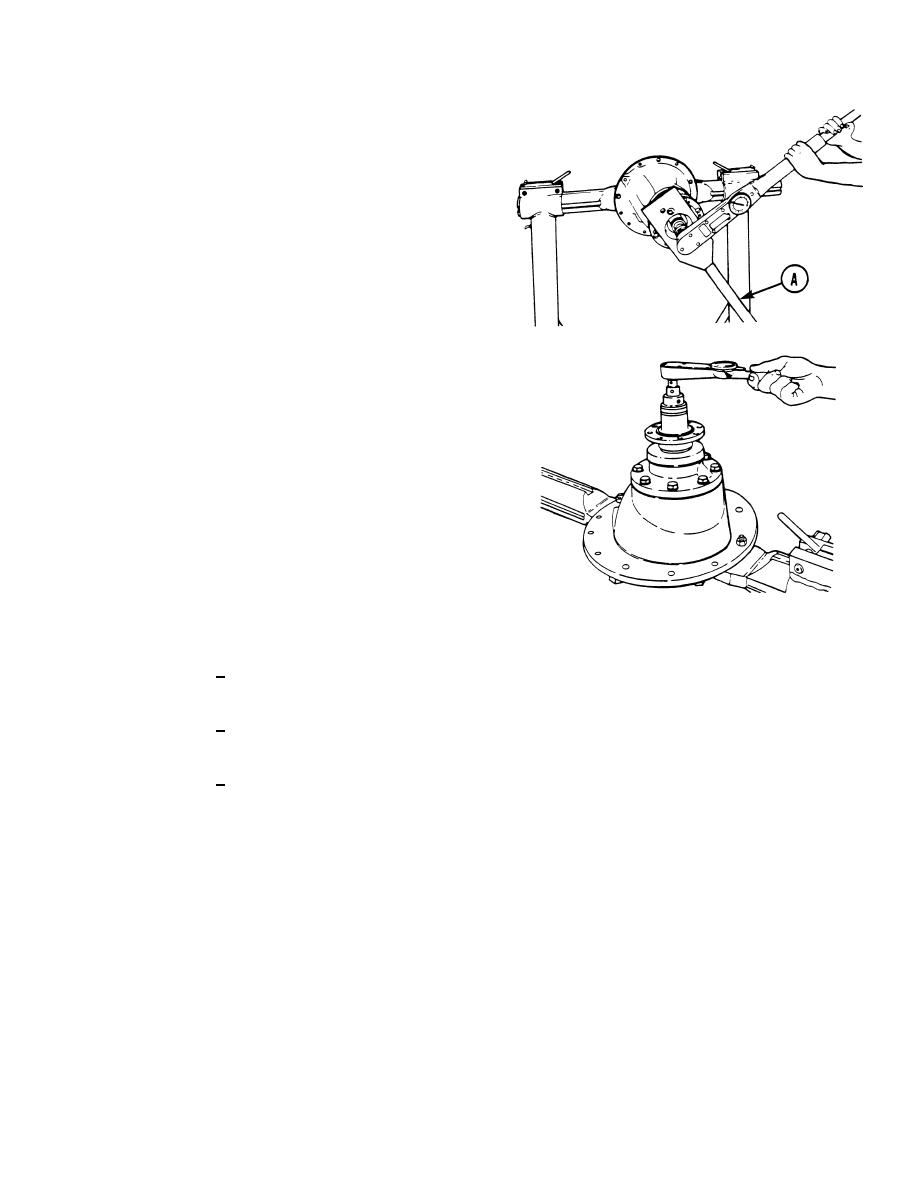 |
|||
|
|
|||
|
Page Title:
REAR DIFFERENTIAL CARRIER ASSEMBLY REPLACEMENT/REPAIR/ ADJUSTMENT - continued |
|
||
| ||||||||||
|
|
 TM 10-3930-673-34
(d)
Fasten fabricated yoke nut tool to
companion yoke (9). Use fabricated
yoke nut tool (A) to hold bevel
pinion (29) in position when nut (31)
is tightened.
(e)
Tighten nut (31) on bevel pinion (29)
to 300 - 400 lb-ft
(406.75 - 542.33 Nm).
(f)
Remove bar from companion
yoke (9).
NOTE
Do not read starting torque. Read
only torque value after bevel pinion
starts to rotate. Starting torque will
give a false reading.
(g)
Attach torque wrench on bevel
pinion nut (31). Rotate bevel
pinion (29) and read value indicated
on torque wrench. New pinion
bearings should be preloaded
between 5 - 45 lb-in. (0.56 - 5.08
Nm) of torque. Reused pinion
bearings should be preloaded
TR00438
between 10 - 30 lb-in. (1.13 - 3.39
Nm).
Increase bearing preload by removing bevel pinion (29) from bearing cage (30) and
1
installing a thinner bearing spacer (40). Repeat Steps (a) through (g).
Decrease bearing preload by removing bevel pinion (29) from bearing cage (30) and
2
installing a thicker bearing spacer (40). Repeat Steps (a) through (g).
Remove nut (31), washer (32), and companion yoke (9) from bevel pinion (29).
3
(h)
Remove eight screws (33) from bearing cage (30).
(i)
Remove bevel pinion (29) and bearing cage (30), as an assembly, from differential carrier (3).
(3)
Install pinion oil seal (36).
(a)
Apply thin film of gear lubricant to inner surface of bevel pinion oil seal (36).
(b)
Apply thin film of gear lubricant to seal bore in bearing cage (30).
(c)
Use a press or mallet and suitable sleeve to install bevel pinion bearing oil seal (36) in bearing
cage (30) until flange of seal is against bearing cage.
9-17
|
|
Privacy Statement - Press Release - Copyright Information. - Contact Us |